
Commercial Roofing
Adviser1 refers you to the best commercial roofing contractors in the industry. Our professionals are known for their reliability and high standards, ensuring that your project is handled with the utmost care and expertise.
Our contractors specialize in providing durable solutions that safeguard your investment. Unlike quick patch jobs that offer only temporary relief, our services focus on ensuring the longevity and resilience of your roof.
Choosing the Right Roof System Matters
When you reach out to Adviser1, you're engaging with a team that has been steadfastly protecting commercial and public buildings for years. Our unwavering commitment to excellence ensures that your commercial roofing needs are met with durable, long-term solutions rather than temporary fixes.
Your roof isn’t just a structure — it’s an investment that protects your people, your property, and your business continuity. Selecting the right system impacts lifecycle costs, warranty compliance, and long-term performance.
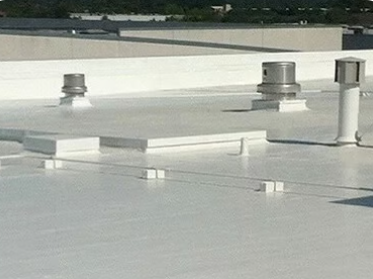

Single-Ply
Single-ply roofs dominate the current re-roofing market. They can be installed fairly quickly and fall in the middle of the price spectrum. They come with comprehensive warranties that cover both labor and materials that typically last up to 20 years.
Single-ply roofs are low maintenance and remarkably sturdy – but by no means does that mean they can be ignored. They resist ponding water better than any other roof and the synthetic materials from which they’re made are often used as pond liners in water features. And if for any reason they need to be replaced or repaired, they can easily be torn off.
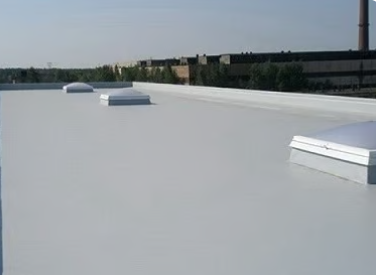

TPO
Thermoplastic Polyolefin is a single-ply roofing membrane that is one of the fastest-growing commercial roofing systems on the market. TPO roofing systems are a single layer of synthetics and reinforcing scrim used to cover flat roofs. TPO roofs are expected to last 20 to 30 years, with their lifespan depending on proper installation and maintenance, which includes regular inspections and prompt repairs.
TPO has gained industry acceptance because of its naturally reflective surface, which reflects UV rays. The National Roofing Contractors Association (NRCA) reported that TPO has about 40% of the commercial roofing market share.
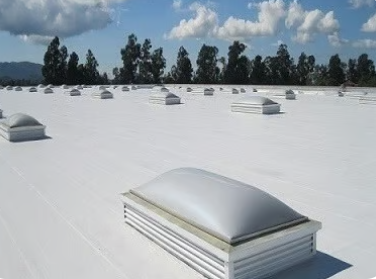

PVC
Polyvinyl chloride (PVC) is a single-ply roofing system that stands up well in adverse conditions. UV light, chemicals including fats and oils, or bacterial growth are all slow to damage these types of roof membranes. It’s a popular choice for restaurants and industrial buildings, as well as buildings in humid climates.
They are lightweight, heat-reflective, and puncture-resistant. They also have strong air-welded seams, high fire resistance, and a tolerance of both high temperatures and high winds.
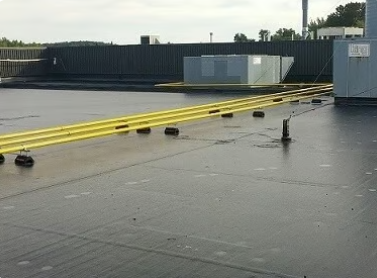

Ethylene Propylene Diene Monomer (EPDM) is a roll-based, durable synthetic rubber roofing membrane. Also known as Thermoset roofing, an EPDM roof system offers strong resistance to sunlight and pollution.
It’s long-lasting, versatile, and easy to install. It’s also one of the most waterproof commercial roofing systems available. EPDM is available in white and black single-ply membranes, offering resistance to sunlight, pollution, and common solvents like alcohol and acids.
EPDM
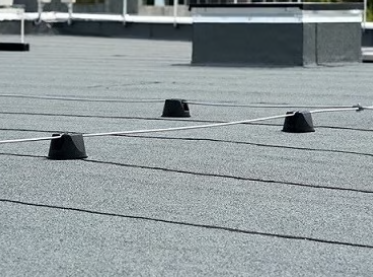

Modified Bitumen
Modified bitumen roofing, often referred to as a "mod bit roof," is a popular roofing material known for its durability and weather resistance. It is particularly well-suited for flat or low-slope roofs, making it a versatile option for both residential and commercial buildings.
The material's ability to withstand harsh weather conditions makes it a preferred choice in areas prone to severe weather. Its robust construction ensures that it remains intact even in challenging environments.
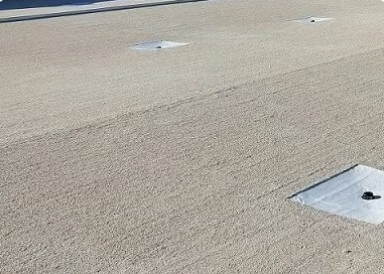

Built-up roofing (BUR), often referred to as "tar and gravel roofing," is a tried-and-true roofing system commonly found on commercial and industrial buildings. It's known for its durability and ability to create a waterproof, watertight surface. BUR is made up of multiple layers of bitumen (asphalt or coal tar) and reinforcing fabrics like fiberglass or felt, which are alternately layered and adhered together to form a strong, cohesive roofing membrane.
Built-up Roof
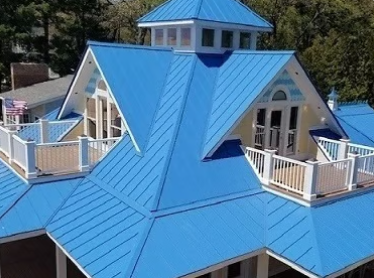

Metal Roofs
Metal Roofing is one of the oldest commercial roofing systems on the market. Most metal roofing systems use corrugated galvanized steel, although other materials such as aluminum or tin can also be used.
Since metal roofing material is rather light in weight, it can be installed right on top of the existing roof. After a metal roofing system is installed, a coating can be added for waterproofing, rust protection, and UV protection.
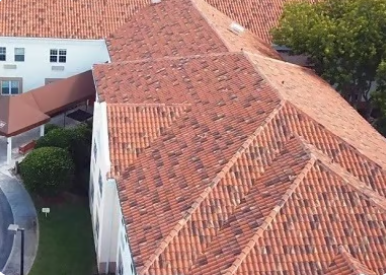

Steep Slope
Steep slope roofing refers to roofing materials suitable for roofs that have slopes of 3:12 or higher. While this is mainly seen in residential properties, commercial buildings sometimes have this style of roof, usually because it’s a design feature of the building, e.g., a hotel or university.
With the right materials and installation, steep slope roofs can withstand severe weather conditions and last for several decades.
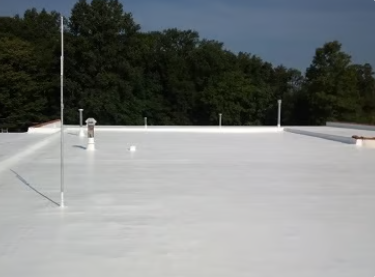

Spray Foam
Spray foam roofing, also known as “spray polyurethane foam” or SPF is a fluid-applied insulation material typically used on commercial roofs. It is a mixture of two chemicals that expand and harden to form a solid, seamless, and tough membrane when mixed and sprayed onto a surface. Introduced in the 1960s, SPF is one of the most effective insulation materials in the world and can last up to fifty years if maintained properly.
When it's time to replace your roof, it's essential to understand the type of roof you currently have and explore the options available for your next roofing system. At Adviser1, our experienced commercial roofing contractors are ready to assist you in selecting the best solution for your needs, no matter the type or condition of your current roof.
To help with this process, we break down some of today’s most common types of commercial roofing systems and highlight their respective pros, cons, and lifespans.
By choosing Adviser1, you're not just securing a roofing solution; you're investing in peace of mind. Let us help you protect your building with the expertise and dedication you deserve.
